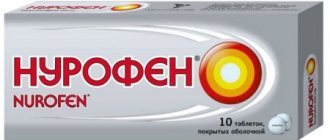“Antibiotics” - this word itself consists of two: “anti”, that is, “against” and “bio”, that is, “life”. How often can you take antibiotics and what will happen if you take them uncontrollably.
Over their more than half-century history, antibiotics have revolutionized medicine. Diseases from which people once died en masse, thanks to these drugs, began to be cured in a few days.
Peculiarities
Many mothers are afraid to start giving their babies antibiotics, since many of them do not act selectively and indiscriminately fight beneficial and harmful microorganisms. When a medicine is prescribed by a pediatrician, it is necessary to take it. It is important to avoid such mistakes:
- Shorten or extend the reception time. The period is determined by the doctor, the minimum is 5 days. The baby may feel better on the third day, but this does not mean that therapy should be stopped. Antibiotics have a cumulative effect, and stopping their use is fraught with exacerbation of the disease. In this case, the bacteria will become resistant to the previously used drug, and a stronger medication will be required.
- Completely refuse the prescribed medication. Only taking antibiotics can help avoid life-threatening complications.
- Choose and give your child an antibiotic independently. The doctor must prescribe the drug and monitor the treatment.
Colds and runny noses may hide more serious illnesses. Taking antibacterial drugs is justified in the following situations:
- Complications of colds, ARVI - pharyngitis, sinusitis, otitis media, bronchitis, pneumonia. Diseases are bacterial in nature, and the use of antibiotics is justified here.
- Frequent relapses of the disease. A simple ARVI quickly turns into bronchitis, and everything repeats in a vicious circle. In this case, the child's immune system is weakened, and the doctor may prescribe antibacterial drugs.
- The addition of a bacterial infection to a viral disease. This happens, for example, when 3-5 days after the peak of an acute respiratory infection, a high temperature rises again and a deep cough with sputum occurs. This often happens in children and can be treated with antibiotics.
Antibiotics for colds are selected taking into account the clinical picture of the disease and the type of pathogen.
The immunity of children after birth is not yet formed, and bacterial infections can affect the fragile body even in the maternity hospital. Treatment of newborns with antibiotics must be strictly justified. It is carried out under the supervision of a doctor, taking into account all contraindications. Depending on the nature and severity of the disease, neonatologists select the following antibiotics:
- for bronchitis: Flemoxin Solutab 250 mg, Ceftriaxone;
- for E. coli, chlamydia: Tsiprolet, Tsifran;
- for otitis, purulent tonsillitis: Augmentin 200, Ampicillin;
- for diseases of the ENT organs, prolonged runny nose: Cefuroxime, Zinnat.
For babies under 1 year of age, antibiotics are indicated if the symptoms of a cold do not go away within three days, but only intensify. Doctors usually prescribe penicillins, cephalosporins, or broad-spectrum drugs. The main requirements that doctors adhere to when prescribing antibacterial drugs to children are low toxicity, minimal side effects, and a wide spectrum of action.
From the age of one, the list of antibiotics available to children expands. For infection of the genitourinary system, Furazidin and Furagin are prescribed. Intestinal infections are treated with Furozolidone. Vilprafen is effective in the fight against intracellular pathogens.
Evgeniy Olegovich talks a lot and willingly about antimicrobial drugs in his articles, books and video lectures. First of all, the doctor emphasizes that they exist to fight various bacteria, a number of fungi, chlamydia, etc. In almost all cases when the disease is caused by bacteria, antibiotics cannot be avoided. They help to recover, and in some cases save a person’s life, because almost all bacterial diseases are very severe.
Dr. Komarovsky’s opinion on antibiotics, when they can still be given, can be seen in the following video.
But in Russia there is another problem - many people start taking antibacterial drugs for influenza and ARVI, and even doctors prescribe them to their young patients.
Komarovsky has no doubt at all about the qualifications of his colleagues who do this, and even gives a reasonable explanation for this situation. If a doctor sees that a child has the flu or ARVI (this is 99% of all “cold” problems), he understands that, by and large, he has nothing to treat the virus with. Because treating a virus means destroying it, and only the child’s immunity can do this.
A conscientious doctor, of course, must tell parents that the child does not need any medications, give recommendations about ventilation, drinking plenty of fluids, and wet cleaning of the room. That's all. At the same time, he is obliged to warn mom and dad that complications of a viral infection are possible, and no magic pills can somehow affect their likelihood; complications will either happen or not.
Most likely, moms and dads will say that the doctor who tells them this is incompetent and will go to another one with a request to prescribe at least something.
Parents in this situation need to be able to say “no.” Komarovsky recommends learning to object in response to such prescriptions, because this will make life easier for everyone - and for the doctor, who actually knows that antibiotics for a virus will only cause harm. A mother who will know that she is protecting the baby’s health. For the baby himself, who will not be stuffed with potent drugs that he does not need at all now.
The treatment regimen is prescribed for a reason. Different antibiotics can accumulate in the body in different ways, hence the timing is different - one drug is recommended to be given to a child for three days, another for five days. Prematurely interrupted therapy can cause relapse of the disease and severe complications.
Parents often ask how to help their child cope with dysbiosis that develops during antibiotic treatment, and it is better to generally prevent the occurrence of diarrhea, vomiting, and abdominal pain.
Komarovsky believes that the connection between dysbiosis and taking antibiotics is somewhat exaggerated. And here there are pharmacists who want to make good money on the idea of mandatory restoration of intestinal flora after treatment with antibacterial agents.
Typically, such consequences occur after long-term use of broad-spectrum antibiotics, which is accompanied by an unreasonable parental attitude towards the baby’s nutrition. For example, he was overfed during therapy, forced to eat, and his diet was dominated by fatty foods. Even in this case, Komarovsky does not recommend starting a separate and rather expensive treatment with Enterofuril or giving the baby probiotics and prebiotics.
To recover, it is enough to balance the diet, and against the background of discontinuation of antibiotics, the intestinal flora will recover quite quickly on its own; in general, it tends to recover quickly. Rehabilitation will not be long and problematic.
Recipe against superbugs
And in vain. Tightening control over compliance with the rules for the sale of prescription drugs (and all antibiotics, without exception, must be sold only by prescription) is a necessary step. In recent years, doctors have been increasingly sounding the alarm: the phenomenon of antimicrobial resistance is increasing throughout the world. Strains of pathogens of all kinds of infectious diseases, so-called “superbugs”, appear that are not sensitive to any of the known antibiotics. In simple terms, there is simply nothing to treat a person infected with such a bacterium - all available antibiotics do not help.
At the beginning of the year, WHO even published a list of 12 of these most “resistant” pathogens and called on scientists, microbiologists and pharmacologists to concentrate their efforts on finding new antibacterial drugs that could cope with these infections. In fact, the list is more than 12; for example, it does not include new aggressive strains of the tuberculosis pathogen. But only because the search for new anti-tuberculosis drugs is already actively underway.
When are antibiotics prescribed to children?
Viral diseases usually last from 5 to 7 days. The child's body must fight them itself. It is important for parents to ensure that the baby follows the pediatrician’s instructions, drinks enough fluids, and takes antiviral drugs prescribed by the doctor. However, under unfavorable conditions, a bacterial infection joins the viral infection. Its symptoms are:
- despite proper treatment, inhalation and rinsing, the child does not get better after 6 days from the onset of the disease;
- a slight improvement is replaced by a new wave of temperature above 38 degrees;
- shortness of breath, pain in the chest area;
- loss of taste and smell;
- the voice becomes hoarse;
- inflammation of the lymph nodes is observed;
- cloudiness of the urine; blood and pus can be found in it.
A clinical blood test can determine a bacterial infection in a child. An increase in ESR and leukocytes, band and segmented neutrophils is detected. If left untreated, the disease quickly develops into bronchitis and sinusitis. Particularly severe complications are pneumonia, purulent otitis and tonsillitis, myocarditis. Timely administration of antibiotics can prevent such diseases.
Drip, prick or drink antibiotics
To this question, Evgeny Komarovsky answers that you need to act according to the situation. Today there are many forms of antimicrobial drugs. But their misuse is unacceptable. Often parents buy an antibiotic in the form of a dry substance for diluting injections, dilute it and give it to drink or drop it into the child’s ear.
This is wrong, says Komarovsky. Each drug must be used strictly as directed. The only exception is two unpleasant diagnoses - purulent otitis media and purulent conjunctivitis. With them, the powder for injections is actually allowed to be diluted with saline solution and dripped into the ear and eyes, respectively.
Back to the Middle Ages
Recently, antibiotics have begun to rapidly lose effectiveness. Antibacterial drugs, which until recently were almost omnipotent, suddenly began to lose ground en masse.
At the same time, the number of superbugs that have developed resistance to most antibiotics is growing. In 2015, WHO published a list of 12 such bacteria. According to scientists, at this rate we risk finding ourselves again almost in Antiquity, when the main causes of death were not “diseases of civilization”, but infections.
At the moment, 700 thousand people die every year from antimicrobial resistance in the world, and according to WHO forecasts, by 2050 we may lose 300 million people! As sad as it is to admit, we ourselves are to blame for this, since sometimes we take antibiotics unreasonably and incorrectly without a doctor’s prescription. And if in the entire civilized world these drugs cannot be bought without a prescription , in our country such a rule only applies on paper.
Is it possible to treat different diseases with one drug?
If the baby gets sick two months after recovery and taking antibiotics, the doctor should prescribe another drug. This will help avoid allergies and increase the chances of quickly destroying bacteria. After all, some of the microorganisms could remain in the child from a recent recent illness; they are resistant to the antibiotic that was prescribed last time. A new drug is required.
Komarovsky draws the attention of adults to the fact that antibiotics can be either narrow-acting or broad-spectrum. The former are designed for certain species and types of bacteria, the latter are active against most known pathogens. Since it is not always possible to accurately identify which microbe caused a particular disease, because not every children’s clinic has bacteriological laboratories, doctors try to prescribe a wide range of drugs.
How to take antibiotics before or after meals?
Antibiotics may have different:
- Chemical composition.
- The principle of destructive action on bacteria.
That is, there is no single identical mechanism of action among these drugs (even for those that belong to the same group). This must be taken into account when taking antibiotics.
There are two methods of taking antibiotics:
- Only on an empty stomach.
- Regardless of the meal - before it, at the same time as a meal, shortly after a snack.
When taking antibiotics before meals, the presence of food in the stomach greatly reduces the effectiveness of the medicine. Food interferes with the absorption of the drug and can cause hydrochloric acid to be destroyed. Therefore, it is necessary to take an antibiotic a couple of hours after eating. In the second case, the digestive process, on the contrary, helps the active substances to be absorbed faster and protects the gastrointestinal mucosa from irritation.
It is simply impossible to remember all the rules for using antibiotics without working as a pharmacist. Therefore, when a doctor prescribes such medications, it is necessary to carefully study the instructions for use. It describes in detail all the instructions and methods of administration.
By time
Let's look at the groups of antibiotics and how they should be taken:
- Penicillins . These medications are taken on an empty stomach.
- Cephalosporins. Can be taken on an empty stomach (Cefixime, Ceftibuten) or directly with food (Cefadroxine).
- Macrolides. Some are prescribed to be taken with food (Spiramycin) or on an empty stomach (Azithromycin).
- Fluoroquinolones. It is allowed to take such medications after meals, on an empty stomach, or during meals.
When to give antibiotics to a child with fever?
Strong and weak antibiotics, according to Evgeniy Komarovsky, do not exist. Of course, it is much more convenient for moms and dads to believe that a drug purchased for several hundred rubles is more effective than a product that costs several tens of rubles. Pricing policy should not be decisive.
So, let's figure out where the error lies. When does the doctor advise you to take antibiotic medications for hyperthermia (high temperature).
There is a generally accepted standard for hyperthermia:
- Mild fever – 38 -38.5
- Moderate heat - 38.6-39.5
- High fever - 39.5
- Fever, life-threatening, extremely high - 40 and above.
It is not difficult to suspect that a virus is at the root of the problem of a child’s deterioration of well-being; it has a recognizable “handwriting”. A sharp and rapid increase in body temperature to 39 degrees or, conversely, low-grade fever around 37.5, dry cough, runny nose, aching sensation in muscles and joints, severe headache. Moreover, all of the above symptoms occur almost simultaneously, and the condition worsens rapidly.
As a result, dysbiosis, thrush, allergies and who knows what other side effects of antibiotics will be added to the viral disease! In addition, antibiotics suppress the immune system, and a child will need it more than ever in the fight against the influenza virus.
In the next video, Dr. Komarovsky will tell you why you should not take antibiotics for viral infections.
- Recently, the child suffered a viral infection, he felt better, but then he got worse again, and the second fever is not inferior to the previous one and does not subside. If new symptoms appear. This is a sure sign of a secondary infection.
- If the temperature is above 38 degrees for more than 3 days in a child under 3 months of age, and in a child under three years of age it is 39 degrees. These are good reasons to start taking antibiotics.
- If the temperature appeared later than the stuffy nose. And a runny nose, in turn, appeared with a sore throat. The consistency and slowness of symptoms is a hallmark of bacterial colds.
If a child has a bacterial infection, the temperature lasts from 3 to 7 days, and there are obvious symptoms of inflammation, the doctor will recommend antibiotics.
If, within 72 hours after starting to take antibacterial drugs, the child does not get better, the temperature does not decrease, it means that these particular antibiotics do not help him, the bacteria is resistant to the drug, and the drug will need to be replaced with another one.
The doctor will also prescribe antibiotics for long and protracted cases of certain viral infections, such as rubella. Moreover, the temperature in these cases can persist even while taking antibiotics.
Children after the age of five can be given self-dissolving tablets. If the baby cannot swallow it, then such a tablet can be easily dissolved in a small amount of water and given to drink in the form of syrup. Children from 7 years old can be given regular coated tablets, and teenagers from 12 years old can take antibiotics in capsules.
Microbes have developed their own defenses. New drugs are released less often than old ones cease to be effective. The need to take away the “universal antibiotic tablet” from the population has become urgent. Now, in order to buy antibiotics, you need to show the pharmacist the doctor’s prescription.
Is antibacterial therapy necessary?
Antiviral drugs, vitamins.
Yes, if bronchitis is bacterial
Expectorants, mucolytic drugs, inhalations
In most cases, yes.
Yes - for purulent otitis or severe disease, as well as in children under 6 months.
Ear drops with analgesic, antiviral, anti-inflammatory effects.
No. The exception is purulent sinusitis and severe disease.
Drops, physiotherapy, anti-inflammatory drugs, nasal gels, inhalations.
In most cases, no, because most often the disease is viral.
Local painkillers, antiseptics. Anti-inflammatory drugs.
How does antibiotic therapy affect a child’s body?
Antibiotics effectively fight infections caused by bacteria, fungi and protozoan microorganisms. To treat these infectious diseases in children, it is impossible to do without the help of antibacterial drugs. However, medications can negatively affect the child’s body in the following cases:
- Wrong choice of drug. Self-medication with antibiotics can lead to serious complications, including hospitalization and threat to the child’s life.
- Failure to comply with the recommended course of treatment. In most cases, antibiotic therapy in children should last an average of 5-10 days. If you discontinue the drug on your own on day 2-3 due to the baby’s well-being, a relapse of the disease may occur after a certain period of time.
- Combined use of antibiotics with antihistamines.
- Excessive use of antibacterial drugs.
Antibiotics for fever in children - harm
In case of a viral disease, taking antibiotics can be dangerous, especially for a child’s body, because:
- they attack the immune system and interfere with its proper functioning - with the next viral infection, the child will get sick much faster;
- side effects inevitably appear - diarrhea, intestinal inflammation, headache, rashes, and recent studies have proven that antibiotic therapy increases the risk of developing asthma and can provoke obesity;
- Over time, resistance arises, i.e. Bacteria develop resistance to the antibiotic, and when it is really needed, it may simply not work.
Fever (increased temperature) is a healthy reaction of the body aimed at protecting it. Microbes entering the body influence a certain center, which contributes to an increase in temperature, which reduces the viability of microorganisms. It is thanks to the high temperature that the body's defenses are activated, and the immune system can function normally.
Text prepared by: Anatoly Kupriyanov
Antibiotics certainly help in the fight against dangerous bacteria. However, their use has disadvantages that are difficult to avoid during treatment:
- Healed immunity - with frequent use of antibacterial drugs, bacteria adapt, and the same antibiotic does not work after a month.
- Dysbacteriosis. Taking medications negatively affects the microflora that populates the child’s intestines. Side effects accompany taking Sumamed, Zinnat and other macrolides, cephalosporins.
- Toxicity of drugs. Antibiotics accumulate in the baby’s body and can poison it. If there is no effect from taking them, doctors change the medicine to avoid negative effects.
- Thrush. Occurs during treatment with Ceftriaxone, Macropen, Fluimucil.
- Allergy in the form of skin rash. Usually occurs on Tsedex, Fluimucil. A change in antibiotic is required and antihistamines are indicated.
To reduce the harm caused by antibacterial drugs, doctors prescribe maintenance therapy. It includes:
- Balanced diet. It is important to follow a gentle diet and drinking regime. Natural antibiotics should be included in the diet (fresh, in the form of compotes, fruit drinks). These are cranberries, black currants, blueberries, raspberries, and sea buckthorn. The menu should contain a sufficient amount of fermented milk products to restore intestinal microflora.
- Correct daily routine. It is important for children to maintain moderate physical activity and walk in the fresh air (when the fever has passed).
- If an allergy occurs, change the antibiotic and relieve the reaction with antihistamines. These include Cetrin, Zodak, Erius, Suprastin and others.
- Taking prebiotics, which help prevent thrush and damage to the intestinal microflora. These are Linex, Enterol, Hilak Forte and others with a doctor’s prescription.
Which antibiotics are best for a child is determined by the attending doctor. In any case, the mother should follow all recommendations and treat the baby correctly. Only then can you avoid dangerous complications that even a common cold can cause.
The choice is up to the doctor
Antibiotics were originally of natural origin (the first antibiotic, penicillin, was isolated by Alexander Fleming from mold), and today they are synthesized chemically. All of these drugs can have two mechanisms of action.
bacteriostatic antibiotics (for example, tetracyclines, macrolides) - they do not destroy pathogenic microbes, but only suppress their growth and thereby stop inflammation.
bactericidal antibiotics (for example, polymyxins, glycopeptides) - they completely destroy pathogens.
Under no circumstances should the patient independently choose one antibiotic or another and generally decide whether or not to start antibiotic therapy. Inappropriate and incorrect use of antibacterial drugs is very dangerous. It leads to the development of antibiotic resistance , which threatens not only the irresponsible patient, for whom these drugs will eventually cease to work, but also all of humanity.
By taking antibiotics not as prescribed by a doctor, or by choosing the wrong drugs or in insufficient dosages, we simply “teach” bacteria to develop resistance to them and mutate. As a result of this “training”, the strongest of them survive, which drugs are no longer able to cope with. In addition, the wrong regimen and course of taking antibiotics is fraught with serious side effects, since many of these drugs, especially if taken in high doses, have a toxic effect on the liver, kidneys and other vital organs.











